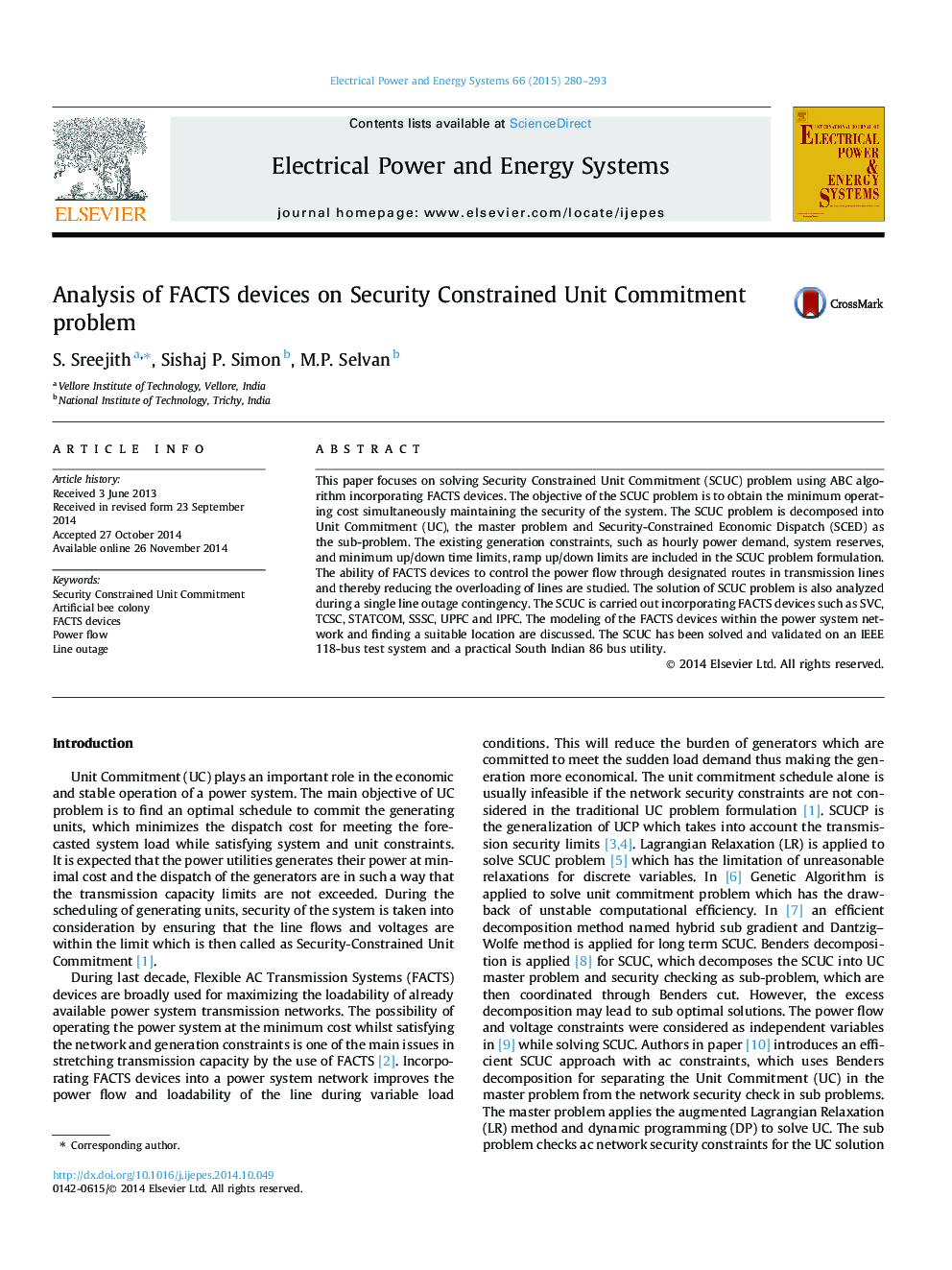| کد مقاله | کد نشریه | سال انتشار | مقاله انگلیسی | نسخه تمام متن |
|---|---|---|---|---|
| 398634 | 1438734 | 2015 | 14 صفحه PDF | دانلود رایگان |

• FACTS devices are modeled and incorporated into Security Constrained Unit Commitment problem.
• The performance of FACTS are tested in maximum loaded lines and optimal location.
• Hybrid ABC algorithm is used as the optimization tool.
• Reduction in generation cost, loss with FACTS devices is also discussed.
• The capability of FACTS devices to tackle contingency condition is tested.
This paper focuses on solving Security Constrained Unit Commitment (SCUC) problem using ABC algorithm incorporating FACTS devices. The objective of the SCUC problem is to obtain the minimum operating cost simultaneously maintaining the security of the system. The SCUC problem is decomposed into Unit Commitment (UC), the master problem and Security-Constrained Economic Dispatch (SCED) as the sub-problem. The existing generation constraints, such as hourly power demand, system reserves, and minimum up/down time limits, ramp up/down limits are included in the SCUC problem formulation. The ability of FACTS devices to control the power flow through designated routes in transmission lines and thereby reducing the overloading of lines are studied. The solution of SCUC problem is also analyzed during a single line outage contingency. The SCUC is carried out incorporating FACTS devices such as SVC, TCSC, STATCOM, SSSC, UPFC and IPFC. The modeling of the FACTS devices within the power system network and finding a suitable location are discussed. The SCUC has been solved and validated on an IEEE 118-bus test system and a practical South Indian 86 bus utility.
Figure optionsDownload as PowerPoint slide
Journal: International Journal of Electrical Power & Energy Systems - Volume 66, March 2015, Pages 280–293